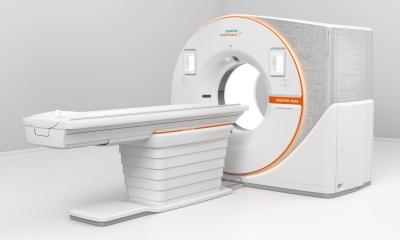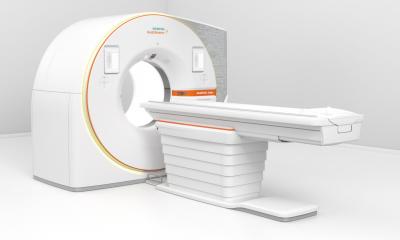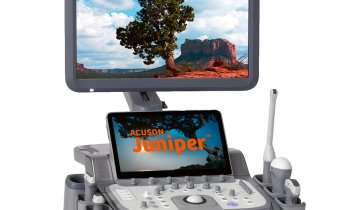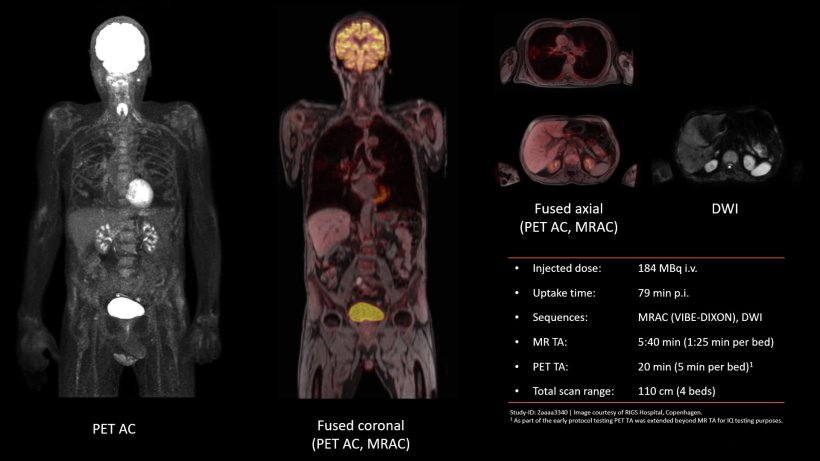
© Siemens Healthineers
News • Hybrid imaging
PET/MR update for added value in theranostics
Bringing diagnostics and therapy closer together - that is the basic concept behind theranostics. Through further development of its PET/MR scanners, Siemens Healthineers aims to advance this approach. Andreas Schneck, Head of the MRI Division at Siemens Healthineers, talks about the new system, which was also presented at the European Congress of Radiology (ECR) in Vienna, and its advantages in the diagnosis and treatment of neurological diseases such as Alzheimer's and tumours.
Essentially, the combination of positron emission tomography (PET) and magnetic resonance imaging (MRI) creates a series of synergies that benefit theranostic procedures for certain types of cancer, the expert explains: ‘On the one hand, MR imaging helps with the precise anatomical localisation of the tumour, especially in soft tissue tumours. These include prostate cancer, but also lymphomas, liver or brain tumours. It can also detect whether neighbouring tissue has already been infiltrated. On the other hand, this modality enables treatment monitoring over a longer period of time without exposing patients to high levels of radiation, as would be the case with CT imaging, for example. This plays a major role in paediatric patients, among others.’
By superimposing PET and MR, diagnostics and therapy can be performed in one session so that the patient does not have to be called in again for separate imaging
Andreas Schneck
PET imaging is used in the theranostic application of radiotracers: in the diagnostic part, low-level radioactive particles provide information about the tumour's location and metabolism. Alpha or beta emitters are then used for therapy, which irradiate the cancer in a targeted manner while minimising damage to the surrounding healthy tissue. ‘This is basically a type of localised radiotherapy,’ explains Schneck. ‘By superimposing PET and MR, diagnostics and therapy can be performed in one session so that the patient does not have to be called in again for separate imaging. This in turn saves time so treatment can start earlier - this is particularly important for oncological patients.’
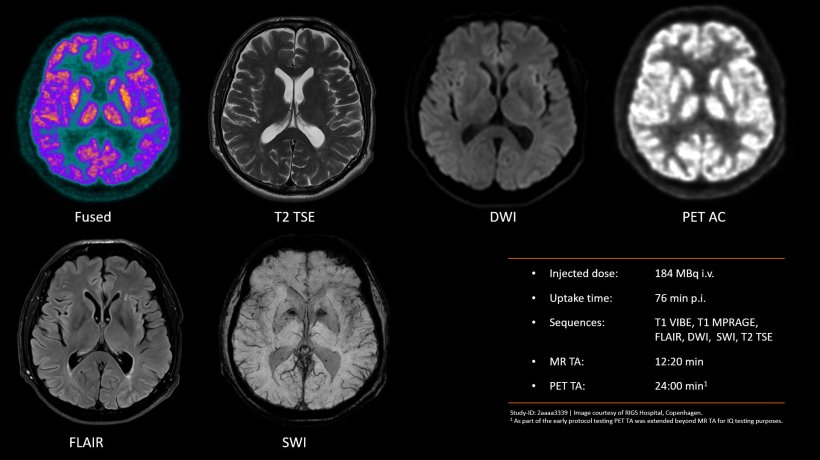
© Siemens Healthineers
Alzheimer's: keeping an eye on plaques and microbleeds
The strengths of hybrid imaging can also be utilised in neurodegenerative diseases such as Alzheimer's: ‘PET imaging is typically required for diagnosis in order to detect amyloid deposits in the brain. It is also used in therapy monitoring to determine whether these plaques are actually being removed. MRI is used as a kind of safety net when administering so-called disease-modifying treatments: these are a new type of medication, but in some patients, they can lead to edema or microbleeds in the brain, which are detected by MR imaging.’

© Siemens Healthineers
For these applications, Siemens Healthineers has developed a new PET/MR system. ‘The Biograph One is not just an enhancement of previous scanners, but rather a completely new platform,’ Schneck emphasises. For example, a new digital, time-of-flight-capable PET detector ensures faster acquisition and higher image resolution, ‘However, MR imaging has also improved significantly and become much faster, thanks in part to the use of artificial intelligence, new workflow engines and deep learning reconstruction.’ As the slower of the two modalities, MRI in particular benefits from this. ‘The findings from clinical trials so far indicate that this can cut scan times in half, and we believe that this will actually make a big difference for our customers.’ For example, a full-body examination to localise possible metastases in tumours currently takes an hour – this could be completed in just 30 minutes. ‘On the one hand, this improves patient comfort – especially for children or people with neurological diseases, who may find it challenging to lie still for so long,’ says the expert. This translates into benefits for both diagnostic quality and clinical workflows, as a higher patient throughput can be achieved.
© Siemens Healthineers
Acquisition ensures molecular imaging
The recent acquisition of the molecular imaging division of the pharmaceutical company Novartis by Siemens Healthineers also fits in with the update of the PET/MR system. This will secure the company a European production and distribution network for diagnostic radiopharmaceuticals used in PET examinations, explains Schneck: ‘Production close to the patient is important, as these tracers only have a short expiry time.’ With both developments, Siemens Healthineers is responding to the increasing areas of application and growing importance of molecular imaging in the context of therapies for neurological diseases and cancer, the expert concludes.
29.04.2025
- Alzheimer's (205)
- brain (587)
- cancer (1009)
- equipment (474)
- imaging (1628)
- molecular imaging (20)
- neurology (600)
- nuclear medicine (126)
- oncology (455)
- PET/MR (75)




